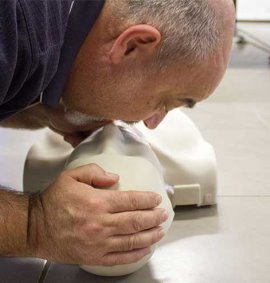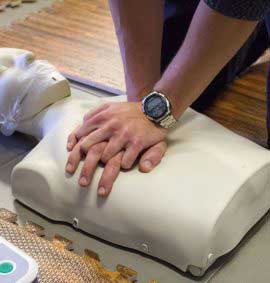Most Australians don’t know how to perform first aid. According to the Red Cross, fewer than five per cent of people have first aid training, representing one of the lowest rates in the world. Whilst the situation is improving, Australians should be doing more to become first aid ready.
The good news is that first aid courses and training opportunities are readily available for those interested in expanding their practical knowledge. One of the essential learnings that First Aid certificates tackle right off the bat is the seven essential steps of first aid.
The 7 Steps of DRSABCD First Aid
DRSABCD stands for Danger, Response, Send, Airway, Breathing, CPR, Defibrillation. The DRSABCD action plan refers to the things you need to do immediately after an emergency:
Step 1: Danger
if a person has been harmed during an accident, the first thing you have to do is check for danger. For example, If a car crash has occurred, is fuel coming out of the vehicle? That could pose danger to you, to other bystanders and to the injured individual. The first rule of administering first aid is to never put yourself in danger when attempting to assist somebody who has been harmed.
Step 2: Response
Following a thorough danger assessment, you’ll need to assess the responsiveness of the injured individual. Are they conscious? Are they capable of answering questions and cooperating?
Step 3: Send for help
Calling 000 or 112 on your phone is the next essential step.
Step 4: Airway
Once you’ve gotten the first three steps out of the way, it’s time to start administering first aid. Check the injured person’s breathing and make sure their airways are clear. If the person is responsive and their airways seem to be clear, you’ll next need to determine what course of action would yield maximum benefit. In the event of someone being non-responsive, open their mouth and tilt the head slightly back if the mouth is clear. If it’s not, place them on their side and clear the contents of the mouth before moving on to the next step.
Step 5: Breathing
If a person is breathing, you can skip the subsequent steps. In the event of them being unconscious, check for chest movements and if they’re breathing, turn them on a side and align the head, neck and spine. Wait for medical assistance to arrive.
Step 6: CPR
When a person isn’t breathing, you’ll have to administer CPR. Cardiopulmonary resuscitation is an emergency lifesaving procedure that can restore breathing through chest compressions and artificial ventilation (mouth to mouth breathing). When administered immediately in the case of an emergency, CPR, taught in our HLTAID009 – Provide Cardiopulmonary Resuscitation course, can double or triple survival rates in emergencies. It’s one of the most important skills you’ll get to master when obtaining a first aid certificate.
Step 7: Defibrillator
An automated external defibrillator (AED) is often available in public areas and can be used by people who have the right kind of training. The AED is usually administered to unconscious individuals who aren’t breathing. The machine “shocks” the heart with an electrical current to re-establish a regular and rhythmical heartbeat. New studies suggest that people are more likely to survive a cardiac arrest if bystanders know how to use the defibrillator and administer this first aid step correctly. AEDs are simple to use and can significantly improve survival chances. You can learn about AED use in our HLTAID011 – Provide First Aid course.
Continuing Care
Continue CPR and monitoring the person until medical professionals arrive. The DRSABCD action plan is crucial in emergencies, guiding you through assessing and addressing immediate dangers, checking responsiveness, and providing life-saving interventions. This step-by-step approach is covered in detail in our UETDRRF004 – Perform Rescue from Live LV Panel course, ensuring you’re prepared for various emergency scenarios.
Needless to say, first aid steps could be somewhat different, depending on the situation. If a person is choking, in the event of a drug overdose or whenever a severe allergic reaction is taking place, you’ll need to respond via a different protocol. Such alternative methods of handling emergencies are usually discussed in all Queensland first aid courses. Our courses discuss these scenarios comprehensively, ensuring you are well-prepared to handle various emergencies effectively.
Get First Aid Training by Learning DRSABCD
The steps mentioned above may seem simple and straightforward but in the heat of the moment, many bystanders would panic, they wouldn’t know what to do and ultimately – they’ll freeze.
If you don’t want to be one of these bystanders, you’ll need some essential training to master the basic first aid protocols. Ideally, enrolling in a first aid training course is best.
Emergencies can happen anywhere, anytime. You should be prepared to help your loved ones or people who have suffered harm. Whether you need comprehensive first time training or a refresher course, you can book one now at BLS First Aid.
ACCREDITED FIRST AID COURSES IN BRISBANE
2.5H accredited CPR training course – No online learning – $60
Accredited first aid training course – Includes HLTAID009 Provide CPR & Online learning – $125
Accredited first aid training course – Includes HLTAID009 Provide CPR & Online learning – $125



